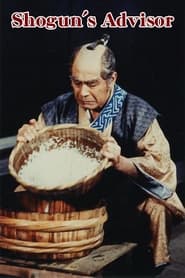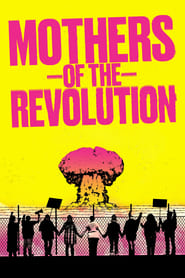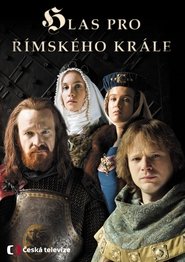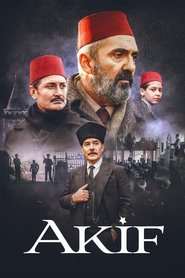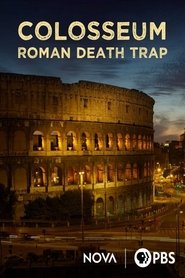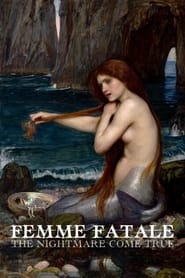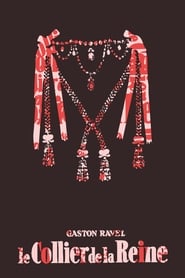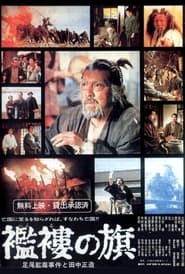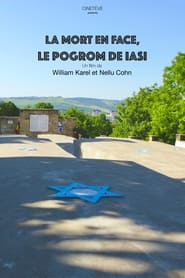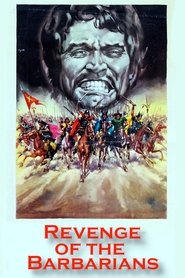Popular History Movies on Pantaflix - Page 355
-
The Retired Samurai
1987
The Retired Samurai
1987
Japan's greatest jidaigeki star, Mifune Toshiro is Shogun's Advisor Okubo Hikozaemon who must be coaxed out of retirement to save Shogun Iemitsu from danger. The elderly Hikozaemon has been belittled of late and has seemingly lost the will to live, much less the desire to assert himself and make Iemitsu listen to reason. The plot thickens when a lovely young woman enters the picture. Can she change Hikozaemon's mind, and thus alter the path of Japanese history? No longer a young man, can Hikozaemon gain the shogun's ear, and succeed in warning him of the evil plot to overthrow him? -
Shogun's Holiday
1958
Shogun's Holiday
1958
During the reign of Hidetada, the second shogun of the Tokugawa dynasty, the advisor Okubo Hikozaemon (Ganjiro Nakamura) entrusts the young Takechiyo (Hiroshi Kawaguchi) to the fishmonger Isshin Tasuke (Kazuo Hasegawa) to help him understand the world. Tasuke, who does not know that Takechiyo is the shogun's heir, trains him harshly. Tasuke's wife Naka (Michiko Ai) is concerned about his harsh teaching style, but Takechiyo gains strength day by day and adapts to his new life. Soon, Takechiyo begins secretly talking about love with a city girl named Otoyo (Hitomi Nozoe), but... -
High Noon on the Waterfront
2022
star 6.7An inventive remembrance of the impact of the Hollywood blacklist on two American classics, rendered as a visually mesmerizing dialogue between Carl Foreman and Elia Kazan. -
Mothers of the Revolution
2021
star 9On 5th September 1981, a group of women came together to change the world. These women marched from Wales to Berkshire to protest over nuclear weapons being kept at RAF Greenham Common. The Greenham Common Women’s Peace Camp that followed, challenged world leaders, altering the course of history and went on to inspire millions as the world’s first and biggest female-only demonstration, preceded only by the suffragettes. -
Hlas pro římského krále
2016
star 7.2Czech Television's epic historical film draws on the breathtaking dramatic life of the great of Czech history, King Charles IV. -
Âkif
2021
Âkif
2021
star 5.5Mustafa Kemal invites Mehmet Akif to Ankara for prevent the propaganda of the occupier states and to increase the participation of the people in the liberation struggle. Mehmet Akif is set out with his 13-year-old son and encounters many incidents as he moves towards Ankara. Mehmet Akif, who was deeply affected by his experiences and witnesses, tries to write the National Anthem in this process. -
The Secrets of the Colosseum
2014
Sea battles in the morning and gladiator fights in the afternoon with wild beasts magically appearing in the arena? A subterranean archaeologist investigates tunnels to see how the Colosseum could be flooded; and architects, engineers, and builders construct a lift and trap door system to attempt the release of a wolf into the most famous amphitheater in the world for the first time in 1500 years. -
Femme Fatale: The Nightmare Come True
2023
The passionate story of the femme fatale, seductive and dangerous, a myth and a fantasy, through her representation in art. -
Mikha'El
2021
Mikha'El
2021
First feature-length documentary about the Archangel Michael in the annals of cinema, with large ensemble cast and multiple story lines in five languages. Filmed on location in eight countries. -
The Queen's Necklace
1929
The Queen's Necklace
1929
Adaptation of Alexandre Dumas's novel 'The Queen's Necklace' which portrays the Affair of the Diamond Necklace which occurred before the French Revolution. -
The Tattered Banner
1974
-
Atlantis Found
2015
Atlantis Found
2015
star 6.8Adventurer-geologist Dr. Martin Pepper sets out to prove his theory – that the true Atlantis existed on the Greek island of Santorini, and was destroyed in the biggest volcanic eruption in human history. In order to achieve his goal, Pepper will use new scientific evidence gathered using state-of-the-art sonar scans of the sea bed and microscopic analysis of the ancient landscape. He must also match Santorini to a series of key clues embedded in the first ever description of Atlantis by the Greek philosopher Plato – from the lost city’s strange ring-shaped design, to the role Egyptian priests played in recording the legend in the first place. By the end of the program, he reveals the stunning findings which may pinpoint the city and show exactly what it looked like. -
Nardong Putik (Kilabot ng Cavite) Version II
1984
star 10The untold true to life story of Leonardo M. Manecio of Malagasang, Imus, Cavite, who possesses an amulet which renders him invisible whenever he is in the mud, as well as the modern day Robin Hood of Cavite -
The Death Train
2019
The Death Train
2019
star 8In Iasi, Romania, from June 28 to July 6, 1941, nearly 15 000 Jews were murdered in the course of a horrifying pogrom. At the time, the programmed extermination of European Jews had not yet began. After the war, the successive communist governments did all they could to ensure the Iasi pogrom would be forgotten. It was not until November of 2004 that Romania recognized for the first time its direct responsibility in the pogrom. All that remains of this massacre are about a hundred photographs taken as souvenirs by german and romanian soldiers, and a few remaining survivors. -
Der Galiläer
1921
Der Galiläer
1921
The treason and trial of Jesus Christ, leading to his execution by crucifixion; based on the Oberammergau Passion Play. -
Revenge of the Barbarians
1960
408 AD. The Visigoths led by Alaric invade northern Italy. At Ravenna, they have to battle, and they are stopped by the power of the Roman legions and the cunning of the emperor's sister, Galla Placidia. As the Goths lose many warriors in the cruel battle, Alaric vows bloody revenge.
 Netflix
Netflix
 Amazon Prime Video
Amazon Prime Video
 Apple iTunes
Apple iTunes
 Apple TV Plus
Apple TV Plus
 Disney Plus
Disney Plus
 Google Play Movies
Google Play Movies
 Paramount Plus
Paramount Plus
 Hulu
Hulu
 HBO Max
HBO Max
 YouTube
YouTube
 fuboTV
fuboTV
 Peacock
Peacock
 Peacock Premium
Peacock Premium
 Amazon Video
Amazon Video
 The Roku Channel
The Roku Channel
 AMC+
AMC+
 Kocowa
Kocowa
 Hoopla
Hoopla
 The CW
The CW
 Vudu
Vudu
 Starz
Starz
 Showtime
Showtime
 PBS
PBS
 Pantaflix
Pantaflix
 FXNow
FXNow
 Tubi TV
Tubi TV
 Kanopy
Kanopy
 Comedy Central
Comedy Central
 Crunchyroll
Crunchyroll
 Microsoft Store
Microsoft Store
 Redbox
Redbox
 Sun Nxt
Sun Nxt
 ABC
ABC
 DIRECTV
DIRECTV
 Crackle
Crackle
 Fandor
Fandor
 Plex
Plex
